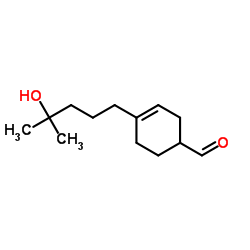| Structure | Name/CAS No. | Articles |
|---|---|---|
 |
Isoeugenol,mixture of cis and trans
CAS:97-54-1 |
|
 |
Methyldibromo glutaronitrile
CAS:35691-65-7 |
|
 |
4-(4-Hydroxy-4-methylpentyl)cyclohex-3-enecarbaldehyde
CAS:31906-04-4 |